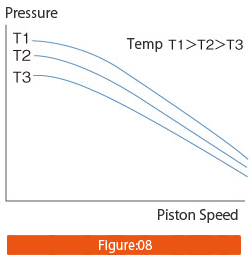Capillary rheometry.
Capillary rheometer is the viscosity measurement device at higher shear rate range compared to the rotational rheometer or the melt flow indexer.
1_2.jpg1)A material is heated in the barrel to the test temperature.
2)The piston pushes the material out of the barrel with preset speed. (shear rate) And we measure the pressure of the molton material in the barrel with the pressure transducer.
3)The pressure increase and gets to equilibrium. The pressure value at the equilibrium of the piston at that speed.
4)Then the speed changes to the next preset value and measure the pressure value at that speed.
5)Normally, we recommend to measure 5 to 16points of different piston speed per test.
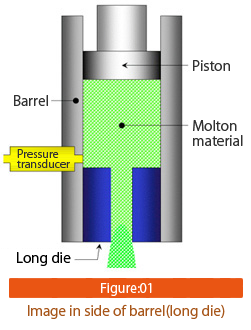
The results are the graph shown at right. This is the graph of pressure against piston speed. This gives us the following information;1.By piston’s area and speed, you get a flow rate Q.2.You measure the pressure.Shear viscosity is shear stress divided by shear rate.
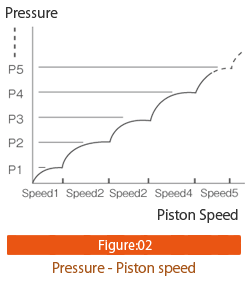
So, you get apparent shear viscosity as the right graph;
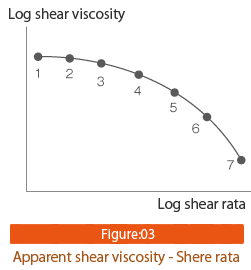
A Viscosity that relates with the process?
There are 2 major viscosity that is important to understand for the manufacturing process. First is “shear” viscosity and the other is “elongational” viscosity.
Obviously, shear viscosity gives the information about the material how it flows in the shear environment; i.e. shear created by screw
Elongational viscosity gives information about the material behavior in converging/diverging environment; i.e. the exit from the extruder, flow through the breaker plate.
The rough model of the elonagation and its effect to the material structure is the right image.
When entering the small hole, the polymer structure will be elongated. And after it comes out, depending on the structure of the material, it tries to recover.
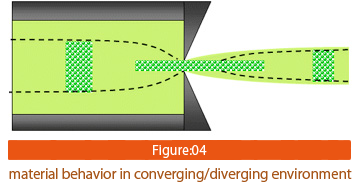
Necessary correction to get the better information.
The pressure values measured in the reservoir inheritably contains the pressure drop generated at the entry and exit of the small capillary. The pressure error can be up to 30% of the total measured pressure values. To correct the pressure error, the operator needs to conduct a few more test with different die length. (with the same capillary diameter) This is so called Bagley correction. R6000 enables this time consuming process to measure one time with 2 bores, 2 capillaries. Longer die is used to get the shear viscosity value and Shorter die (We use the die with almost zero length) to perform Bagley correction and to calculate elongational viscosity. The flow in almost-zero-length-die is very close to that of any converging/diverging geometry, thus gives us a big hint about flow in processing system.
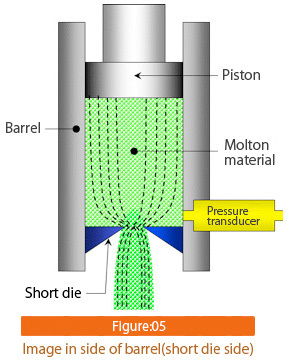
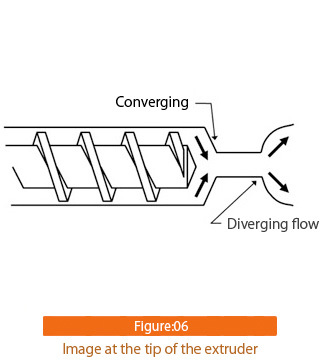
Since we measure shear and elongational viscosity in one path with twin bores, there is a less chance of having human and mechanical error, and error by the change of material characteristic.
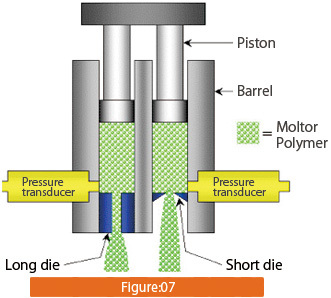
Normally, we suggest to measure at 3 different temperatures to have better understandings of the material, and easier use in the simulation program like CAE.
